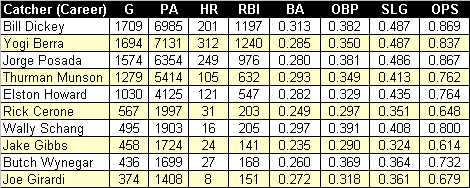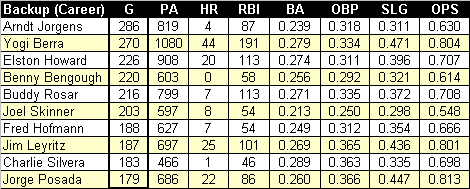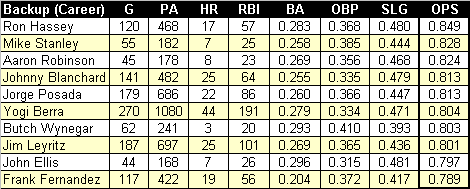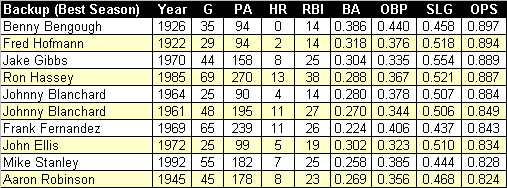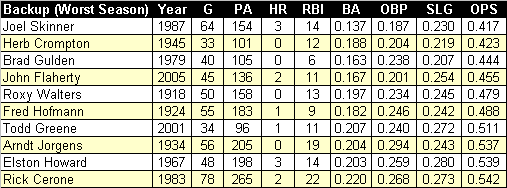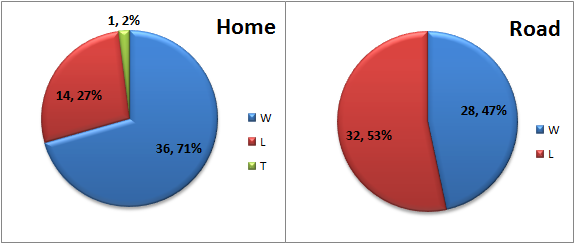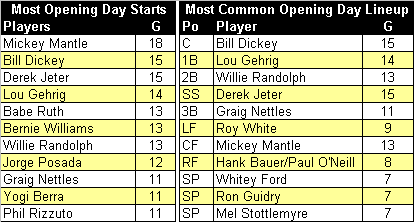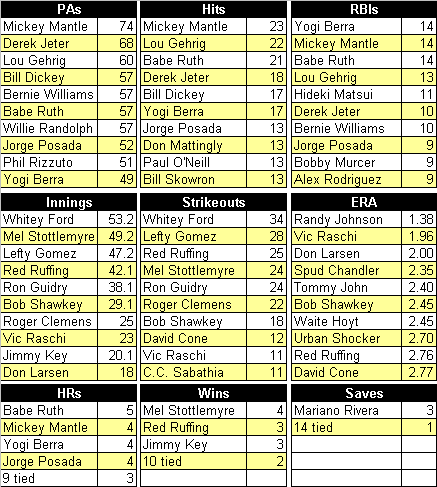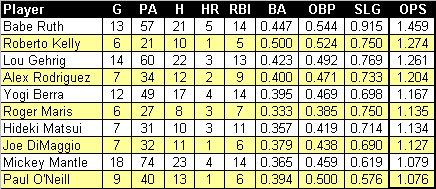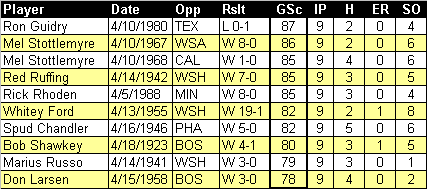Mark Kram Jr. is one of the finest practitioners we have of long form newspaper journalism, better known as the bonus or takeout piece. He has been with the Philly Daily News since 1987 and his work has appeared in The Best American Sports Writing six times (here’s a selection: “The World is Her Cloister” 1994; “Joe’s Gift” 2002; “I Want to Kill Him” 2003; “A Lethal Catch” 2005).
Kram has a clean, almost invisible style that doesn’t call attention to itself. It is in the fine tradition of Gay Talese’s fly-on-the-wall approach. With Kram you don’t notice his technique because you are immersed in the story. Now 56, Kram has written his first book, “Like Any Normal Day.” It is published today.
I wrote a short piece on Kram in the Scorecard section of Sports Illustrated last week and was fortunate enough to chat with him recently about his book and his father, who himself was a celebrated magazine writer.
Enjoy.
Bronx Banter: I’m a huge fan of “Forgive Some Sinner,” the uncompromising article you wrote about your father. It must not have been easy to write that story. How did it come about?
Mark Kram: Frank Deford planted the idea with me. He and Dad had been colleagues at Sports Illustrated during the 1960s and early 1970s but had drifted apart in the ensuing years, as friends occasionally do. They were both from Baltimore, yet not the same Baltimore. Frank grew up in an affluent area of the city, and Dad had come out of East Baltimore, a working class section. He had lettered in baseball, basketball and football in high school—in fact, he had played high school baseball against Al Kaline—but had been a poor student and had no interest in books until his pro baseball career in the Pirates organization came to an end.
I had known Frank as a boy and became reacquainted with him some 30 years later at a book event he had at The Free Library of Philadelphia in 2005, three years after Dad had died. We went out for a few drinks and I filled him in on the man he once knew. By the end of the evening, he said, “You know, you should write about him.” The thought had occurred to me, but I could not think of the circumstance that would arise where it would be possible. Were I to do it, it would have to have been for publication, and I could not think of any editor who would be remotely interested. Incredibly, Frank conspired with Rob Fleder, then a top editor at SI, to offer me an assignment.
BB: That had to come as a surprise, given how your father and SI parted ways in 1977.
MK: You can say that again. I showed my wife Anne the email Rob had sent me and her jaw dropped. SI had not even published an obit on him, and here they were asking for 6,000 words on him. I played along, but I was under no illusions that whatever I came up with would ever appear in their pages.
BB: Really?
MK: Yes. As stellar has his work had been, Dad had breached some very serious ethical standards – which I explore in some depth in “Forgive Some Sinner”–so he represented a complicated piece of SI history. It seemed unlikely to me that they would have any appetite to revisit it. And yet I was excited to have the assignment, if only because it gave me a license to pick up the phone, call people and ask questions.
BB: What happened when you submitted the story?
MK: SI paid for the piece in full and then sat on it. Rob had done a wonderful job helping me get it in shape—he is a splendid editor—but as I said, I doubted that it would ever get in. A year and half passed and Rob called. He said, “I have good news and bad news.” I said, “Give me the bad news.” As I expected, he said SI would not be running the piece. But the “good news” was that I could have the story back and sell it elsewhere, if I could find someone who would take it.
BB: At least they paid you for it and let you have it back.
MK: That was kind of them – and I appreciated it. So I shopped it around but no one wanted it. And then one day, a neighbor, Jason Wilson—who is the series editor of Best American Travel Writing—crossed into our yard and said he had just been appointed the editor of “The Smart Set,” an online cultural magazine he convinced Drexel University to underwrite. “Forgive Some Sinner” appeared as part of their launch and still gets visitors to it. So I would have to say it could not have worked out better.
BB: And there is a benefit to having it on-line because a simple Google search continues to lead readers to it.
MK: Absolutely. It’s been wonderful in that way.
BB: And it was included in The Best American Sports Writing that year. That had to be gratifying.
MK: It was. Given the circuitous journey the piece had before it found a home, it was more than that. I am deeply thankful to Glenn Stout, the series editor of the book, and Bill Nack, the guest editor who selected it. And I am thankful to Frank, Rob and Jason for teeing it up.
BB: I was drawn to the part of “Forgive Some Sinner” where your old man discouraged you from pursuing a career in writing. Can you shed some light on what his thinking was?
MK: Writing was an extraordinary struggle for him. I can still see him sitting at the typewriter, drenched with sweat and wreathed in smoke from the pipe that he always had going. Every word to him was a careful brush stroke. Frank captured it well in his new memoir, “Over Time”:
“To Mark, writing was a laboratory science more than a craft; he could not write the second word until the first word was perfect. He also believed that he was like a female holding a finite number of eggs—that he only had so many words within him.”
I could not have said it better. Frank and I part company on certain other observations he had, but I am a very fond of him and he is surely entitled to his opinion. But to answer your original question: I think Dad discouraged me from writing because it was such an ordeal for him. I remember he used to say, “I should have stayed in baseball and become a first base coach.” Maybe he would have been happier.
BB: To what extent was writing that story a relief for you?
MK: More than you can know. For years I had looked upon with the eyes of a boy—and only those eyes. I loved him dearly, and was always trying to plead his case in one way or another, even when the evidence to the contrary had been inescapable. I idealized him. I remember I used to look at his work and wonder how he ever did it—and if I ever could even approach what he did in some small way. Writing “Forgive Some Sinner” demanded that I looked at him with another set of eyes—challenging, discerning and yet not judgmental. No one is spared suffering in life, but you can either be embittered by it or ennobled by it. Dad became embittered by it, I am sad to say, and yet that was not the sum of who he was. “Forgive Some Sinner” was a painful excavation, yet one that acquainted me with the gray areas that hold regency over us. I think in some sense “Forgive Some Sinner” primed the pump for “Like Any Normal Day.”
BB: That’s an excellent point particularly since this is your first book. Why this story and why now?
MK: For years, I had hoped to do a book. Certainly, it seemed to be a logical outgrowth of the narrative writing I had been doing so long for newspapers. But I did not want to do just any book. I had no interest in doing an as-told-to celebrity job. I wanted to slice off a piece of life and examine it. What I found in the Miley family was precisely what I had been searching for: Ordinary people steeped in extraordinary circumstances. But I did not choose this story as much as it chose me.
BB: Ordinary people…
MK: Yes. When I attended the University of Maryland, I had a conversation with the novelist James M. Cain at his house one evening. Remember, “The Postman Always Rings Twice” and “Double Indemnity?”
Cain was well into his 80s by then, but he told me a story that has stayed with me ever since. Carey Wilson, the producer, had once told him, “Jim, the reason I like your stories is that they are about real people. I know them.” Cain told me this story to illustrate his antipathy for Raymond Chandler, whose characters in the “The Big Sleep” included “a rich, old bald-headed guy who raises orchids and has two nymphomaniac daughters.” Cain said Wilson had told him, “Whoever heard of someone like that? You can take that son of a bitch and jump in the lake with him.” In any event, I knew Buddy Miley. We were we the same age. I had played ball with boys like him, star athletes who would only go so far before gravity pulled them to earth. I think I understood who he was.
BB: You played sports in high school, right?
MK: Some baseball and basketball. Good enough to be on the team, but more or less a bench player.
BB: How did Buddy’s story choose you?
MK: I suppose you could say Buddy whispered in my ear. He became a thread I tugged on while I worked on other stuff. I think with any creative project, you have to give yourself space to play with the loose threads you come across and see where they lead. Some of the threads you pull at snap off. Others just go on and on. Buddy became a thread that I could not let go of. Over the course of some years, I found that some intriguing themes emerged: What is our duty to one another? To what extent are we able to sacrifice of ourselves? I fooled with some of screenplay versions of the story, suffered through the usual annoyances that are attached to that, and then finally decided: This has to be a book. At that point the question became, can I sell it?
BB: Did you have a feel for how that would go?
MK: Practically speaking, it seemed to me to be a long shot that any publisher would be interested in Buddy, or his story. But I had what I think of as an epiphany. It dawned on me that the book was not about Buddy alone but the people he touched.
BB: Someone who is injured like that impacts everyone around him.
MK: Exactly. That one split second of horror that occurred one day on the football field in 1973 changed the destiny of an array of people beyond just Buddy. His parents, his siblings, especially Jimmy, his youngest brother. Friends. I even found his high school girlfriend in Alabama—Karen Kollmeyer (then Karen Shields)–whose life intersected with Buddy in an intriguing way up until the very day he died. It seemed to be the perfect book for me—not a sports book per se, or a Kevorkian book—but one that played out across a large canvas of human experience.
BB: You explain in the book that you first wrote a piece about Buddy after reading a letter his mother wrote in Sports Illustrated. What was it about her letter that drew your curiosity?
MK: I always have an eye out for pieces that play in the margins of sports. In this case, an editor at the Philadelphia Daily News passed it along to me. Since I had come to Philadelphia in 1987 from Detroit, I had no idea of who Buddy or the Mileys were. In her letter, Rosemarie said, in part:
“I am sure the majority of SI readers ‘love’ football. I ask them to spend one day with my son. They will see the terrible pain he endures. They will feel his frustrations at being totally dependant upon others.”
It went on. But the point is, I followed up on her invitation, even if it had been intended as a rhetorical one. I called her and asked if I could drop by and take her up on her invitation. Of course, I had no idea of where it would lead except for perhaps an interesting feature article.
BB: Did you stay in touch with Buddy after that first article was published?
MK: I spoke with Buddy just once after the piece appeared in the paper. Apparently, some of his old friends had read it and organized a benefit for him. Ostensibly, it was to raise funds so he could visit Buoniconti clinic in Miami in search of relief from the pain he was in on a daily basis. He did take that trip, but it was to no avail, though he did get an eyeful on a side trip to South Beach.
BB: Hey, that had to be a good feeling, that something you had written had led people to organize a fund-raiser?
MK: The hope I always have is to spark a connection. Occasionally, that has expressed itself in a level of generosity that I found inspiring. I remember I once did a story on Joe Delaney, a promising young Kansas City Chiefs running back who died trying to save some boys from drowning—a $1000.00 check showed up in the mail to forward along to his widow. In the case of Buddy, I think we see the bigheartedness of others throughout his life—and this book.
BB: He was not alone.
MK: Good people stepped forward from every walk of life to help him, from legends such as the former Colts running back Alan Ameche, his widow Yvonne, and obscure characters such as Dave Heilbrun, who volunteered his expertise to build an addition on the Miley home that allowed Buddy some space of his own. So I suppose I would say, what I have always hoped to do is move readers in a way that enables them to connect to a world outside themselves.
BB: I interrupted you there. So did you stay in touch with Buddy?
MK: We spoke just once again and he more or less faded from my radar until I received a phone call from the office one evening in March, 1997. Buddy had been found dead in a Michigan motel room. From what could be immediately ascertained, it looked like it had been a Kevorkian job. I contributed some reporting to the story that appeared the following day, but did not become more deeply involved in the story until a year later. I proposed a piece on the one-year anniversary of his death, if only because the initial reporting seemed to leave certain questions unanswered. I am also of the belief that in pursuing feature subjects—especially when there is a tragedy involved—it is usually a good idea to give people some space to grieve.
BB: That makes sense.
MK: When I revisited the Mileys in March 1998, everyone was there except for Jimmy. I was told it would just be too hard for him to be there. Although I suspected then that Jimmy had been the one who had taken Buddy to Michigan, I figured that I would be done with the Mileys when I finished that story. But I had grown fond of Rosemarie and gave her a call every now and then just to talk. Always, it seemed, we ended up laughing over one thing or another. Occasionally, I would bring up Jimmy, ask how he was and told her I would love to talk with him if he was ever up to it.
BB: And you later did a story on him as well, right?
MK: The piece I did on Jimmy appeared in the Daily News in June 2006. A year before, Rosemarie called me and told me Jimmy would like to talk with me. So I drove out to Warminster to see him, no strings attached, just a chat. If for whatever reason he did not want a story written, I promised him that that would be the end of it. We met at a diner and talked for four hours. I knew then that he had a compelling story to share, but I could also see that he was bound up in fear. He seemed to think if he went public, he would end up in jail as an accessory. Or, perhaps even worse, that he would be shunned in the community for participating in an act that the Catholic Church looked upon as a sin.
BB: He was tortured.
MK: Yes. He was so overwhelmed by his fears that he called two weeks or so later and declined to proceed. Another year passed before he decided to move forward. Contrary to the apprehensions that had held him back, the community embraced him with compassion. I received dozens of letters from readers who opened up their hearts to him. To the extent that the book had a genesis, it could be found in those letters—this sense that what Jimmy experienced had universal overtones. In fact, I had an aunt who lived in a vegetative state for 10 years, so I had some fairly strong personal views regarding self-determination.
BB: Did you share any of the letters you received from that second article with Jimmy?
MK: I did. I dropped a pile of them off at his house one day. I think it was a revelation to him, that there were people who supported what he had done, even if they did not approve of Dr. Kevorkian or what he stood for. They understood that what he had done had been an act of compassion on behalf of his brother.
BB: When Jimmy got cold feet, how did you react to that?
MK: Disappointed, of course, yet not entirely surprised. As we spoke, I sensed that he was backing away. And yet he continued to talk, as if by doing so he was expelling a large burden he had been carrying around. Sometimes I have had story subjects who could not bring themselves to follow through. I understand it. This is deeply personal stuff, and it is not easy to expose your inner world to someone, particularly a stranger who proposes to share your story in a public forum. In this case, there was also an added obstacle that came into play. Nationally, the big story in the news in early 2005 was Terri Schiavo, the young woman who had been in a vegetative state and became the focus of a heated debate on euthanasia in America. I had a sense that that spooked Jimmy.
BB: Can you talk about the difficulties that you face as a writer when you get to know a subject and like them? And was there a difference between the connection you had with the family during the two articles you wrote and then the book?
MK: Initially, my relationship to the Mileys was cordial but not one that I had any sense would endure. They were lovely people, yet the necessities of turning around fresh ideas seemed to preclude any deeper connection. Once a story is published, there is always this sense of closure, that both the subject and I had attained what we had set out to accomplish and would part ways. A book is different matter altogether. To go to the depths one has to plumb in order to piece together a narrative non fiction of any length, it is essential to establish a level of abiding trust and transparency. What I found is that you have to give of yourself in order to have any expectation of any return. The Mileys were helpful in this regard. They assured me, “This is your book.” And I assured them that I would observe the same sensitivity in writing about them as I would my own family.
BB: In what way do you give of yourself? At one point in the book, you bring yourself in the picture by sharing some of your personal history. And you do share that you and Buddy were the same age. Is this what you are referring to?
MK: By “giving of yourself” to a subject, this quite simply means that you have to be something more than an interrogator. You have to connect with them at a human level and create an environment of safety. I remember when I interviewed Karen in Alabama, I asked her to look up “Forgive Some Sinner,” if only to give her a sense that I understood what was involved with letting go of old demons. I think by reading it she came away with a better sense of who I was and became more relaxed with me. As far as Buddy was concerned, I included some personal history only to underscore the passage of years. In the 23 ½ years Buddy had been paralyzed, longer by the way, than he had been ambulatory, time had not stopped for me as it had for him.
BB: Buddy fell in love with Karen while he was in the hospital. At what point in the process did you track her down?
MK: Karen emerged very early in my reporting. At some point while I was preparing the piece on Jimmy for the Daily News, he told me that women had always loved Buddy. Some had passed in and out of his life, but there was one in particular that Buddy had a special affection for. He told me she was living somewhere in the South, Florida or Alabama. He said he had her telephone number somewhere. Once the Daily News story appeared and I began to draft a book proposal, I asked Jimmy to give her a call. He did, and Karen and I later spoke on the phone. That was in 2006 or so. When I finally got a deal, I flew down to Alabama and spent a few days with her.
BB: That’s a huge get on your part.
MK: By the end of those interviews, it became clear to me that she would be an essential character to the book. I remember I told her, “I need you to help me tap into the heart of this story.” And so she did, beyond what I could have imagined.
BB: Was there anything new or surprising that you learned about the Mileys writing the book?
MK: Nothing “new” or “surprising,” but I did develop a deep appreciation for what lovely people they were. None of them shied away from any of the questions I had, although their memories in some cases had dimmed. I remember asking Rosemarie Miley if she would share with me the letters she exchanged with her husband Bert during World War II. I asked her a few times offhandedly, but she always said no, that they were private. It was not until my final interview with her that, out of nowhere, she asked me if I would like to see one of them. “Of course,” I told her. She excused herself from the table and came back with a hand-written love letter that Bert had sent her from the Pacific near the end of the war. Quietly, she read part of it aloud to me. It was as if I had come across a missing piece in an elaborate puzzle: beneath the stony exterior that Bert exuded beat the heart of a man with the same dreams his paralyzed son had had.
BB: The story is so sad in many ways and dramatic. How did treat that story without becoming melodramatic?
MK: From the beginning, I knew I had to find some way to lighten the emotional load. So humor had to be a critical element of the story. Jimmy provided more than enough in this area. As the youngest of the seven Miley children, he had been a fine athlete, perhaps better than Buddy, yet he had been immature and always falling over himself in one way or another. It was not until he tapped into his courage and helped Buddy that he ascended into manhood. Karen, as a character, also allowed me to step away into a love story, even if that love story would ultimately have tragic overtones.
BB: And it was an unusual, complicated love story, too.
MK: Karen weaves in and out of the book. They were supposed to go on their first date after the game in which Buddy was injured. Karen began visiting him in the hospital and they became close – indeed, they fell in love. In the book there is a wonderful picture of the two of them on the stage at graduation. In any event, Karen moved away at that point with her parents, but not before Buddy assured her that when he was able to walk again, he would find her and sweep her off her feet. It was pure fantasy – Buddy would never be able to walk again – yet Karen became a projection to Buddy of the normal life he longed for. As the years passed, Karen went on to have a life of her own, with a husband and children, yet a part of her remained connected to the boy whose heart had touched her so long ago. Buddy contacted her two years before his death with the help of a private investigator. During this period, the deep feeling between them reemerged, and continued until Buddy called her from Michigan to say goodbye.
BB: You had this story with you for a long period, yet had addressed it only in short form. What entered into your thinking as you expanded to 70,000 words instead of 5,000?
MK: Good jockeys have a clock in their head, which is to say they have a sense of pace that enables them to know precisely where they are at any given point in a race. I had that ability here. Originally, the contract called for 80,000 words. Before I signed it, I sat down with a legal pad and worked up a very loose outline, just to get a sense of how far this material could be spread out. What I came up with during that exercise was what appeared to be a 70,000-word book, so we had the contract amended. And the book I turned in came to 70,400 words. We ended up trimming perhaps 1000 words from that during the editing process.
BB: Damn, that’s nothing.
MK: With the help of my wife, Anne, who attended the Johns Hopkins Writing Seminars and has a sharp eye for errant prose, I did some rewriting on certain chapters as I went along. Some of our editorial sessions were tense.
BB: Oh, I can only imagine.
MK: But when I looked at what she suggested with a cooler head I was always deeply grateful, not just for her direction but the patience and love with which she offered it.
BB: Did you show your editor any early drafts?
MK: No, I just showed George Witte, the editor in chief at St. Martin’s Press, the completed manuscript when I was finished with it. I had a good sense of where I was going. And there is no point eliciting a partial score. George got back to me within a week with a lovely acceptance note. At that point, there were only some very minor revisions.
BB: That sounds so tidy. And you would have never been in this position had you not written about your father. “Forgive Some Sinner” really gave you a leg up on writing “Like Any Normal Day,” is that fair to say?
MK: In so far as the deep diving you have to do with certain subjects, I would say yes. I came away from “Forgive Some Sinner” with a better understanding not just of Dad and myself, but of life—even under ideal circumstances, it is a muddy affair. In a certain way, I cleared the land of the underbrush with that piece, which enabled me to enter the world of Buddy and Jimmy Miley in an unobstructed way. And I had discovered that “Forgive Some Sinner” helped me develop some previously unengaged creative skills, perhaps which in the final analysis can only come with experience. I remember whenever I had self-doubts as a boy, Dad used to remind me again and again: “The race is to the steady, not to the swift.” I can still hear him say that: Hang in there.
BB: I like how Scott Raab put it when he said, “Endurance is a talent.”
MK: Well said. Along with whatever talent you can scrape together, you have to have an iron ass. Buddy sure as hell had it. For 23 ½ years, he hung in here until he could not do it one more day. The pain that would shoot through him was so severe that it would leave him gritting his teeth. And yet I think he was ennobled by his suffering, not embittered by it. That’s a remarkable thing, really. Buddy had a big heart, and he shared it with whoever walked into his room and sat down with him. It was because of that heart that he stepped away from his struggle, if only to enable his mother Rosemarie a few years of peace in her advancing years. So he and Jimmy stole away to Michigan. Buddy was the personification of endurance, which is why I will always treasure the piece of memorabilia that Jimmy gave me that had belonged to his brother: a signed Cal Ripken jersey. Somehow that seemed so perfectly fitting.
You can order “Like Any Normal Day” here and here. And check out Kram’s website, here.
[Photos provided by Mark Kram Jr. Additional images via Elevated Encouragement. Author pictures taken by Mary Olivia Kram. ]






















